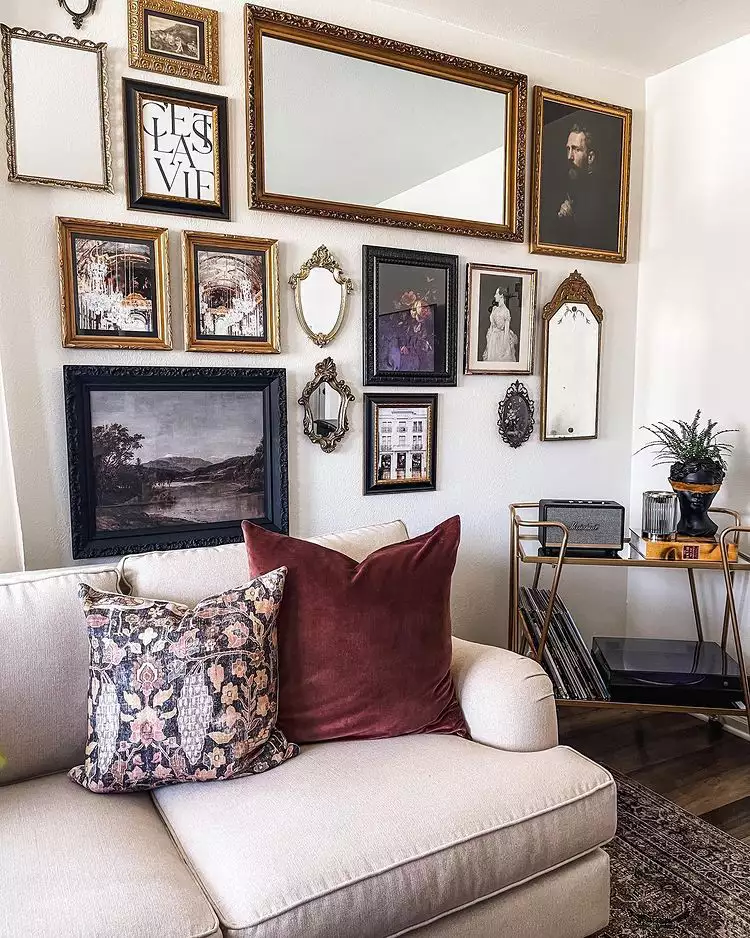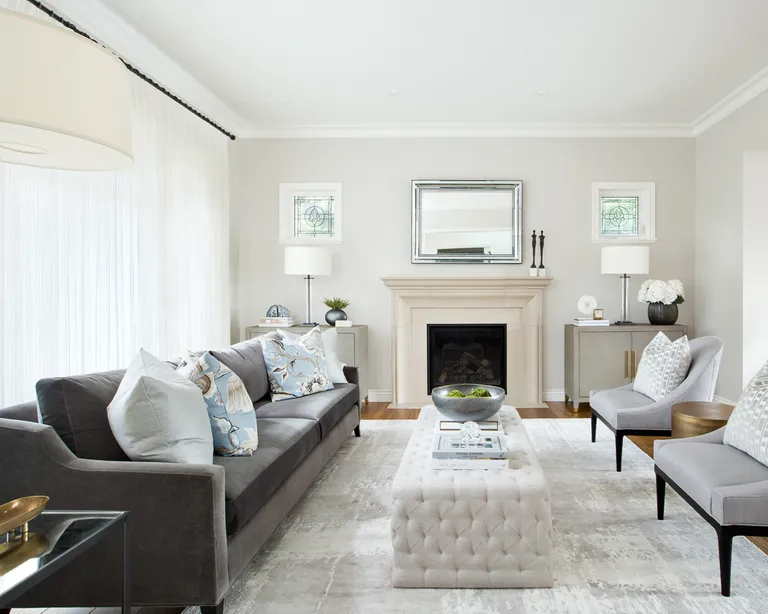The average size of new homes in New Zealand are shrinking, apartment living is on the increase and the popularity of retirement villages is growing. As a result the challenges of furnishing small spaces are a hot topic.
Compact living requires creativity, strategic planning, and a keen eye for detail to make the most of every inch. However, with the right approach, even the smallest of spaces can be transformed into cozy and stylish havens. In this blog, we'll explore some expert tips and tricks for optimizing small spaces while maintaining both functionality and aesthetics.
Tip #1 Scale down furniture
When selecting furniture for a small space, proportions matter. Choose pieces that are appropriately scaled to fit the size of the room without overwhelming it. Avoid bulky or oversized furniture that can make the space feel cramped. Instead, opt for streamlined pieces with clean lines and slender profiles.


Image source: Lounge Design
The two sofas in the image above are the same size, but see how the top one feels heavy and bulky. The sofa below feels visually lighter due to its narrow arms and the lighter base. Elevating the sofa with the use of slender legs allows the light to pass under the sofa and create the illusion of more space. Ask yourself if you really need a 3 seater, after all, most people feel awkward sitting in the middle.
Image source: Hawthorne Collections, Lounge Design
The same theory applies to chairs, look for pieces with fine features. Visually unobstructive, they are also easy to move around when seating needs to be re-configured. Don't think you have to compromise on comfort though, these chairs have all passed my 'sit' test!
In awkward rooms, it may be an idea to ditch the sofa. If a room has multiple entry points, sofas can hinder movement. These images show how chairs can provide more flexibitly and improved flow and still look inviting.
Image source:Better Homes & Gardens, Houzz
Tip #2 Multi-functional Furniture
Opt for items that offer storage solutions or can be easily transformed or tucked away when not in use. Nesting tables are a great place to start, these rustic tables are sturdy enough to double up as stools when extra seats are needed for larger gatherings. Nesting an ottoman with a coffee table offers the best of both worlds, a safe, sturdy surface for drinks and somewhere soft to put your feet up at the end of a long day. The added bonus of nesting tables is that they don't look as big as large coffee tables but still fill the space between seats which can look a bit like a dance floor if left empty!
Image source: Hawthorne Collections, Woodwrights
Stools are the ultimate multifunctional item. More dinner guests than chairs? There's always space to squeeze in an extra stool or two. Use them as side tables, bedsides or tuck them under the console table and your friends will think you are styling your furniture like a pro!
Tip #3 Utilise Vertical Space
When floor space is limited, look up! Vertical storage solutions such as floating shelves can draw the eye upward, creating the illusion of height and making the room feel more spacious. Note from this image that the chair tucks comfortably into the area without becomming an obstruction.

Image source: Willow College
Grouping artwork creates visual interest, it's a little unexpected and so much more exciting than scattering pictures here or there. Alternatively, opt for an oversize piece of art for dramatic effect.
Image source: Pinterest
Tip #4 Window Treatments
Maximize the impact of natural light by keeping windows clear of heavy drapes or bulky window treatments that can be easily opened during the day to flood the room with sunlight.
Opt for light coloured fabrics with texture for interest. Mirrors strategically placed opposite windows can also help bounce light around the space, making it appear larger and brighter.
(top tip - make sure the reflection in the mirror is interesting!)
Image source: Houzz, Homes & Gardens
Tip #5 Create Visual Continuity
Maintain visual flow throughout the space by using a cohesive color palette and design style. Light, neutral tones are your best friend when it comes to small space design. Shades of white, cream, and soft pastels can reflect natural light and make the room feel airy and open.
Avoid clutter and opt for a minimalist approach to decor, focusing on a few key pieces that make a statement. Integrate pops of color or texture strategically to add visual interest without overwhelming the space. Greenery is a perfect pop of colour and brings a sense of life and wellbeing to a neutral space.

Image Source: Pinterest
Tip #6 Break the Rules!
Your home is your sanctuary, you have to be true to yourself and decorate it in a way that makes your heart sing. Embracing maximalism in a considered way will infuse your space with personality and coziness. Dark walls blur the corners and edges, the contrast highlighting the furniture and decor. The contrast of the luxiourious velvet on the sofa in the image below provides a backdrop for statement accessories like pillows, art and rugs to command attention.

Image source: Beth Diana Smith
Ultimately, the design of small living spaces should prioritise both aesthetics and functionality, creating environments that not only look beautiful, excude personlity and enhance the quality of life for their inhabitants. By embracing the principles of thoughtful design, even the smallest of spaces can become a haven of comfort and inspiration.


























Dive into the thrilling world of Casinonic, where cutting-edge technology meets exciting gaming options. From classic pokies to immersive live casino games, Casinonic ensures endless entertainment for players. Its intuitive interface, fast payouts, and generous promotions are often praised in Casinonic reviews. Whether you’re new to online casinos or a seasoned pro, Casinonic promises an enjoyable and secure experience with https://casinoslots.co.nz/casinonic.